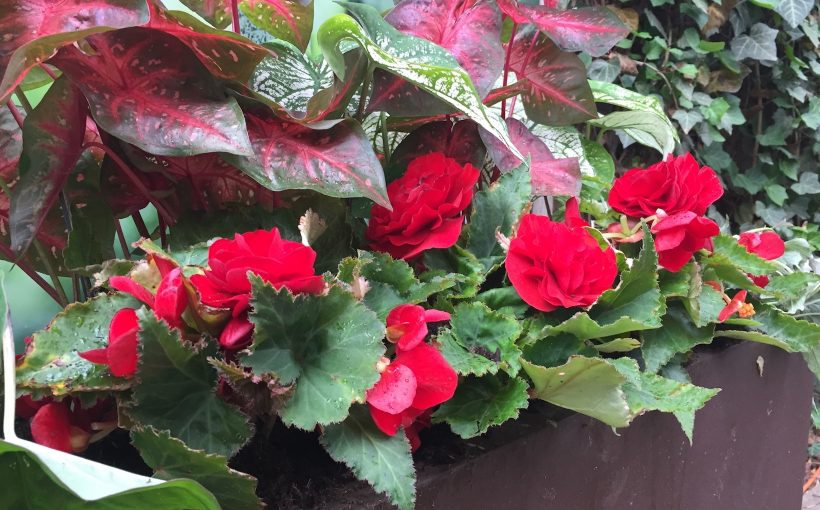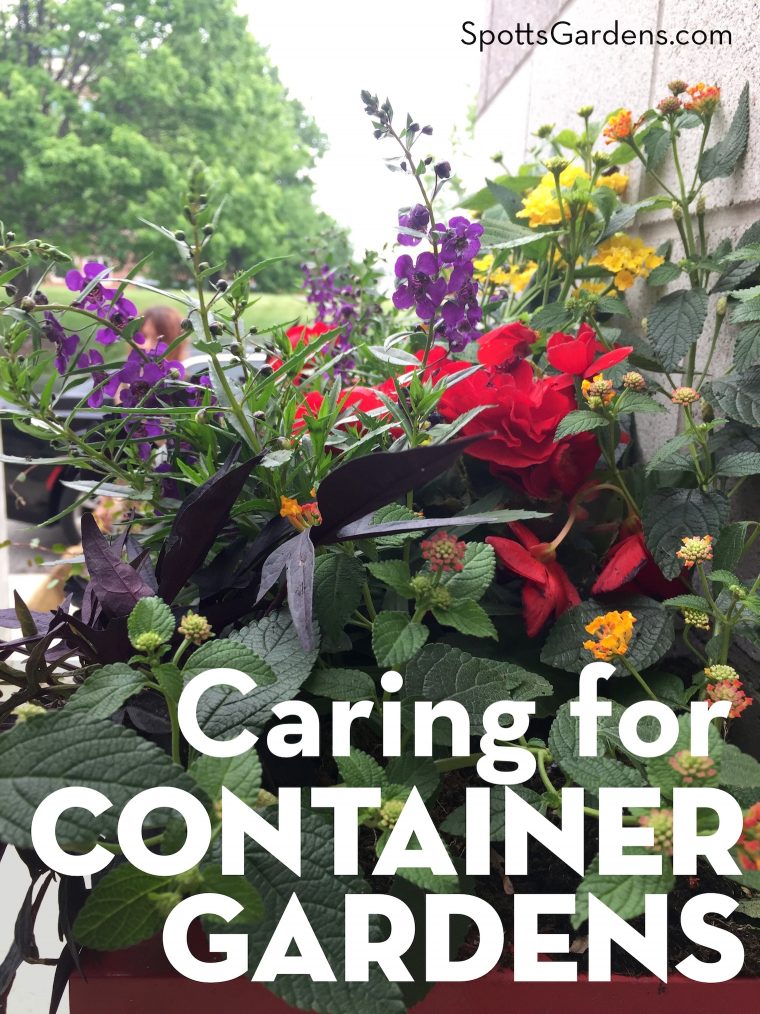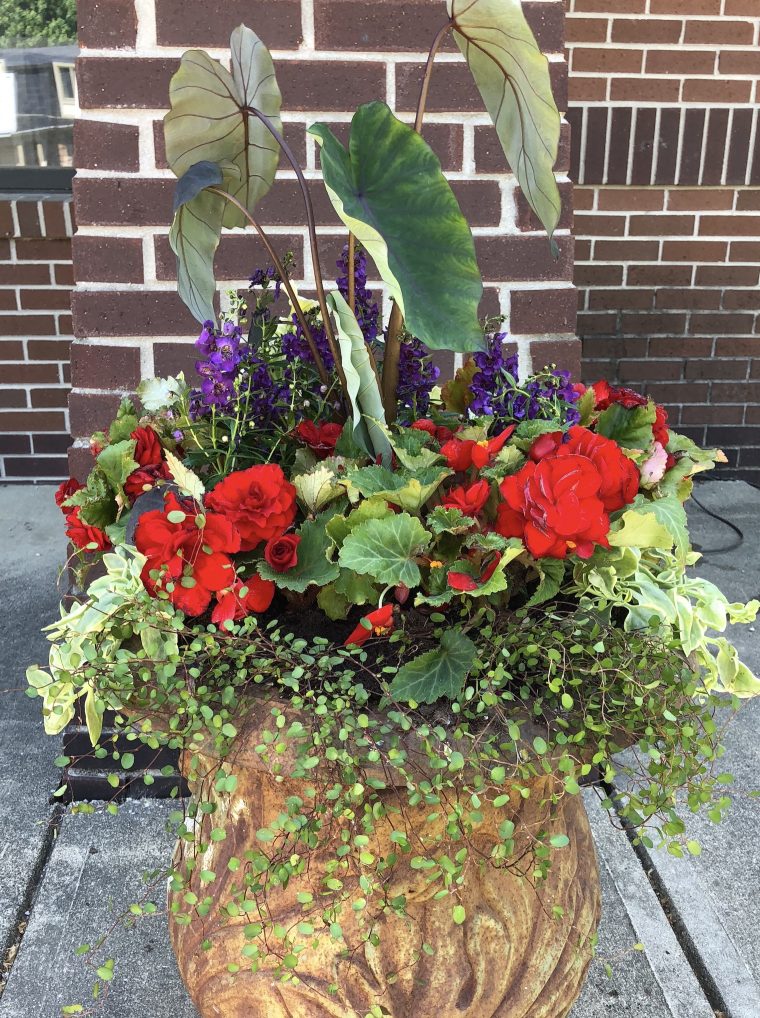Whether you have loads of outdoor space or only a set of front steps, container gardens can work for you! Use them to draw your eye to the front door, create a screen, or soften the lines of a patio.
But once you’ve packed your pots full, what do you do? Keeping your container gardens blooming depends on smart (but easy!) container care.
Watering Container Gardens
The most important factor in container gardening is watering. In an Indiana summer, you may need to water every day and sometimes even twice a day. During cooler weather, you can back off to watering every two or three days if we don’t get rain.
How to Water Your Flowering Containers
Rain water is ideal for watering container gardens. But if you don’t have a rain barrel, tap water is fine. Do not use soft water on your plants.
Always check to see if your container needs water first. Push your finger into the soil up to about your second knuckle. If the tip of your finger is dry (or feels warm), water until you see water running out the drainage holes at the bottom of the container.
Water at the soil line, not over the top of the leaves.
Signs that your containers may need water include plants drooping, turning crispy, or going brown.
If the soil has grown so dry that water is just beading up and running off, you’ll need to rehydrate it. Fill a bucket with water and set your entire container in it to allow the soil to soak.
Don’t Overwater
Your pot should have holes in the bottom so that excess water can run out. If your pot does not have drainage holes, be extra careful to water until the soil is damp but not soggy.
Succulents like sedums, cactus, or hens-and-chicks can easily be killed by overwatering. For these plants, allow the soil to dry out completely between waterings. If the plants start to blacken or look soggy, you’re overwatering.
Mediterranean herbs like rosemary, thyme, lavender, and oregano also benefit from some drying-out time between waterings.
Feeding Your Plants
Every time you water your container garden, nutrients run out the bottom. To keep flowers blooming, you need to replace those nutrients with fertilizer.
Fertilize your blooming containers every week. Water first, then fertilize with compost tea or an organic liquid fertilizer. Our favorite commercial, organic fertilizer for blooming containers is FoxFarm’s Big Bloom.
If you use a conventional (non-organic) fertilizer, apply at only half of the strength the package recommends. Always water before feeding.
Don’t fertilize your herbs; it encourages lush green growth at the expense of the oils that give them flavor.
Grooming Your Container Garden
Once flowering plants set seed, they stop blooming. So to encourage yours to make more flowers, pinch off spent blooms.
Trailing plants like sweet potato vine or ivy that start to grow overly long benefit from occasional trimming.


